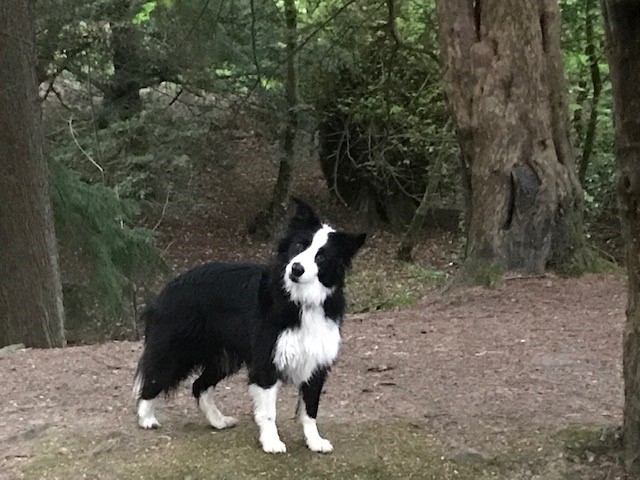Paws for thought - Teaching old dogs new tricks

Have you noticed so many people are choosing to have a dog these days? Friends of mine who for years have vowed never to have one seem to have succumbed to the charms of ‘man’s best friend‘.
Psychologists don’t need to look too far to understand the motivation. Once you get by the obvious inconvenience and mess, there lies a simple unconditional adoring relationship, which seems to wrap Itself around you without judgement, regardless of your mood or appearance. A dog’s welcome is like no other: every time is like the first time.
There is a theory (perhaps far-fetched!) that dogs grow to mimic their owners in appearance and personality as the relationship deepens; in my case Ted the border collie has indeed some of my characteristics - though I draw the line at trying to assassinate the postman!
Dog owners know their pet can often be the natural gateway to conversations, filling awkward silences and assisting people to communicate freely through the little understood, but highly effective, canine channel.
This will be put to the test next week when my dog Ted visits our local psychiatric hospital as a therapy dog, assisting patients who have withdrawn to respond to a pet. The same theory applies to the reading dog initiative, where dogs sit with children to help them overcome their difficulties with reading aloud in class; they seem to bond well with a pet who sits and ‘listens’- helping to put the child at ease. I’ve seen this in practice and it really works.
The organisational buzzword of this decade will surely continue to be engagement: how much, how little, what type; how do we measure effectiveness of our efforts; how do we limit it; what technologies can replace or augment it; how do we know whether automation or a human is required for the right sort of engagement; how do we stay on brand but in budget; how do we achieve artificial authenticity?
Recent discussions in our network highlight the complexity of keeping pace with a rapidly evolving future and trying to turn a large customer operations model around, fuelled with endless start-stop attempts to appear natural, whilst being somewhat artificial. However, new start-ups can succeed with clever automation in a way that older organisations struggle at the seams, testing the theory of whether we can teach an old dog new tricks.
At the Oracle Open World event this week, I presented on a panel about the future challenges of CX. The conclusion from our group was that the decade ahead will herald simplicity of engagement, due to a growing understanding of how data can be used to remove friction and create more intuitive services. Technologies used by organisations to serve customers need to mirror and be aligned to those devices that customers themselves use.
‘Aah’ moments will be when we understand that most human to human communication in the future will be escalated in nature rather than being the starting point, it will present when automation hasn’t worked, customers are unable to navigate the service, or it’s complex in nature like a complaint. In these instances, we could do worse than mimic the natural unrestrained canine dialogue - dogs understand everything because they listen patiently and intently. Resolution engagement differs from transactional enquiries, but resourcing difficulties and volume means these can be confused.
There are loads of great dog communication quotes - apologies to those who aren’t dog lovers and indeed the cat lovers among you!
‘Dogs do speak, but only to those who know how to listen’. Author: Orhan Pamuk
‘Everything I know, I leaned from dogs’. Author: Nora Roberts
Have a lovely Valentine’s Day everyone, if you don’t get those flowers maybe you’ll get a nice kiss from your dog!
Have a great weekend!
Anne Marie